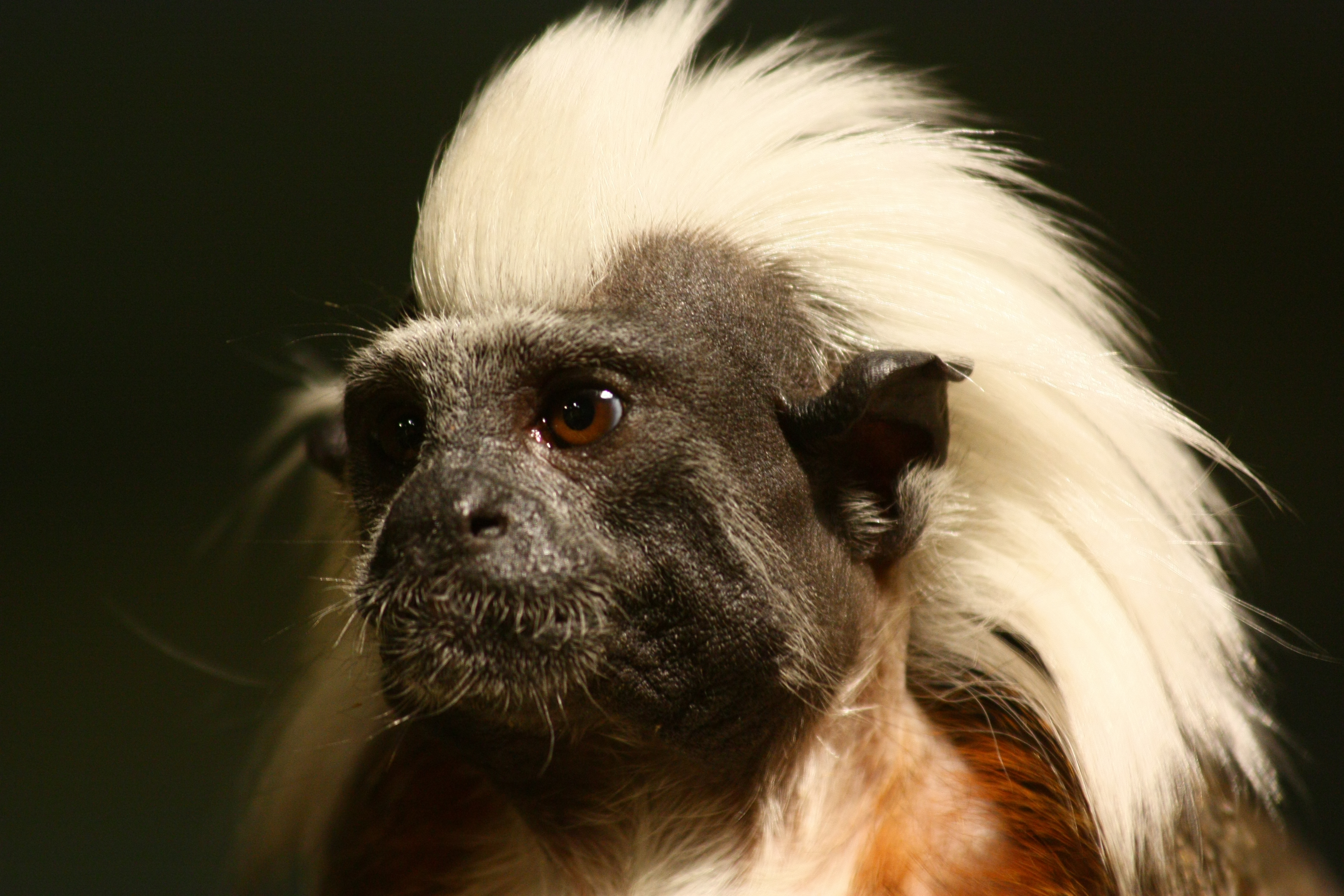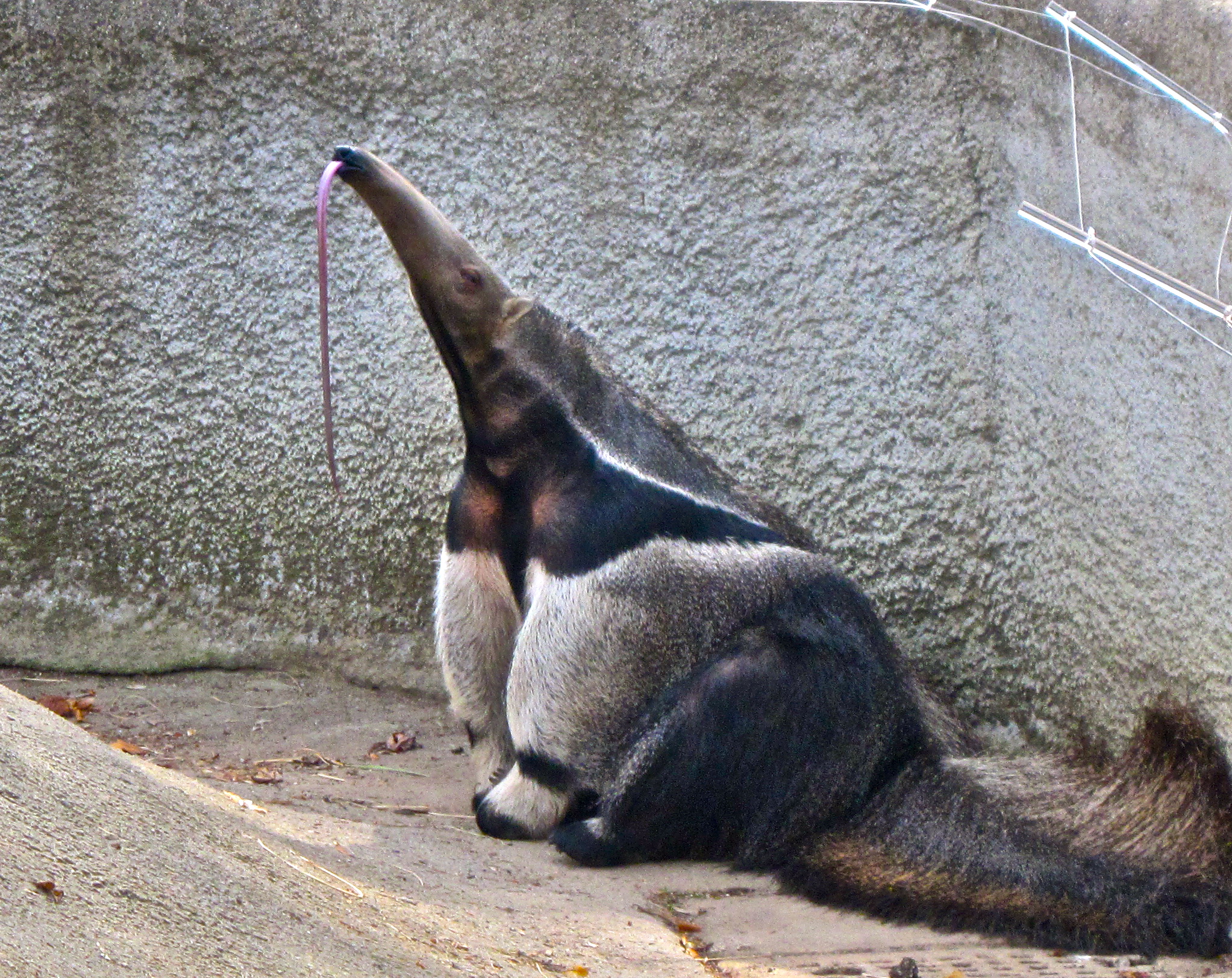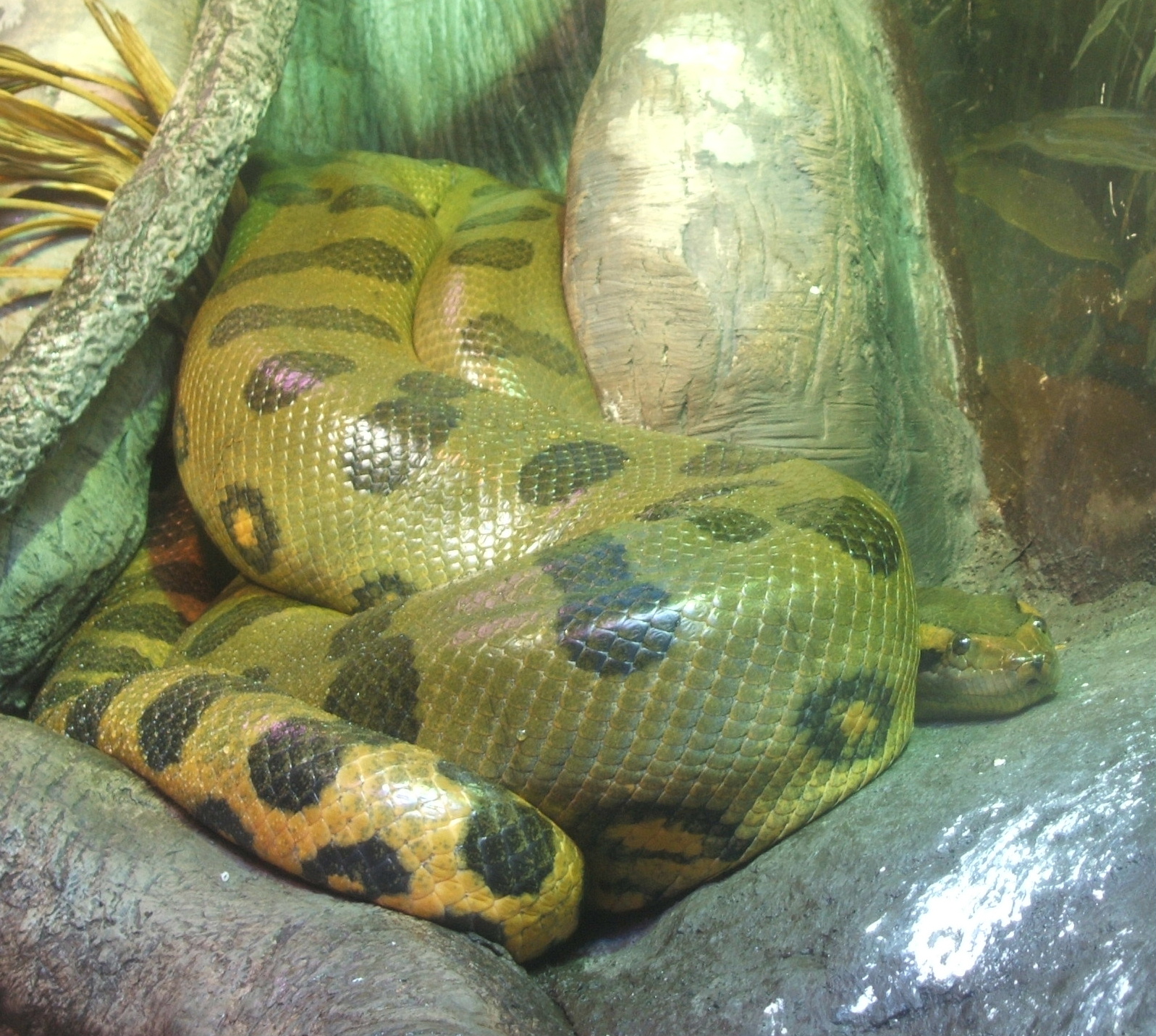|
Franklin Park Zoo
The Franklin Park Zoo is a zoo located in Boston, Massachusetts. It is currently operated by Zoo New England, which also operates the Stone Zoo in Stoneham, Massachusetts. The zoo is located in the northeast portion of Franklin Park, Boston's largest park and the last component of the city's famed Emerald Necklace. The zoo was opened to the public in 1912, and managed by the City of Boston until 1958, when the Metropolitan District Commission (MDC) took control. Under the MDC's management, the zoo opened several new exhibits, including Bird's World (c. 1975), the Children's Zoo (1984), and the African Tropical Forest (1989). In 1991, the zoo's management was handed over to the Commonwealth Zoological Corporation (CZS), which also gained management of the Stone Zoo. (In July 1997, the CZS was renamed Zoo New England to "reflect the changing image of both zoos".) The zoo has been accredited by the Association of Zoos and Aquariums (AZA) since 1990. History Frederick Law Olmst ... [...More Info...] [...Related Items...] OR: [Wikipedia] [Google] [Baidu] |
Western Lowland Gorilla
The western lowland gorilla (''Gorilla gorilla gorilla'') is one of two Critically Endangered subspecies of the western gorilla (''Gorilla gorilla'') that lives in Montane ecosystems#Montane forests, montane, Old-growth forest, primary and secondary forest, secondary forest and lowland swampland in central Africa in Angola, Cameroon, Central African Republic, Republic of the Congo, Democratic Republic of the Congo, Equatorial Guinea and Gabon. It is the nominate subspecies of the western gorilla, and the smallest of the four gorilla subspecies. The western lowland gorilla is the only subspecies kept in zoos with the exception of Amahoro, a female eastern lowland gorilla at Antwerp Zoo, and a few mountain gorillas kept captive in the Democratic Republic of the Congo. Description The western lowland gorilla is the smallest subspecies of gorilla but still has exceptional size and strength. This species of gorillas exhibits pronounced sexual dimorphism. They possess no tails and ... [...More Info...] [...Related Items...] OR: [Wikipedia] [Google] [Baidu] |
The Boston Globe
''The Boston Globe'' is an American daily newspaper founded and based in Boston, Massachusetts. The newspaper has won a total of 27 Pulitzer Prizes, and has a total circulation of close to 300,000 print and digital subscribers. ''The Boston Globe'' is the oldest and largest daily newspaper in Boston. Founded in 1872, the paper was mainly controlled by Irish Catholic interests before being sold to Charles H. Taylor and his family. After being privately held until 1973, it was sold to ''The New York Times'' in 1993 for $1.1billion, making it one of the most expensive print purchases in U.S. history. The newspaper was purchased in 2013 by Boston Red Sox and Liverpool owner John W. Henry for $70million from The New York Times Company, having lost over 90% of its value in 20 years. The newspaper has been noted as "one of the nation's most prestigious papers." In 1967, ''The Boston Globe'' became the first major paper in the U.S. to come out against the Vietnam War. The paper's 2002 c ... [...More Info...] [...Related Items...] OR: [Wikipedia] [Google] [Baidu] |
Pygmy Hippopotamus
The pygmy hippopotamus or pygmy hippo (''Choeropsis liberiensis'') is a small hippopotamid which is native to the forests and swamps of West Africa, primarily in Liberia, with small populations in Sierra Leone, Guinea, and Ivory Coast. It has been extirpated from Nigeria. The pygmy hippo is reclusive and nocturnal. It is one of only two extant species in the family Hippopotamidae, the other being its much larger relative, the common hippopotamus (''Hippopotamus amphibius'') or Nile hippopotamus. The pygmy hippopotamus displays many terrestrial adaptations, but like the hippo, it is semiaquatic and relies on water to keep its skin moist and its body temperature cool. Behaviors such as mating and giving birth may occur in water or on land. The pygmy hippo is herbivorous, feeding on ferns, broad-leaved plants, grasses, and fruits it finds in the forests. A rare nocturnal forest creature, the pygmy hippopotamus is a difficult animal to study in the wild. Pygmy hippos were unknown ou ... [...More Info...] [...Related Items...] OR: [Wikipedia] [Google] [Baidu] |
Cotton-top Tamarin
The cotton-top tamarin (''Saguinus oedipus'') is a small New World monkey weighing less than . This New World monkey can live up to 24 years, but most of them die by 13 years. One of the smallest primates, the cotton-top tamarin is easily recognized by the long, white sagittal crest extending from its forehead to its shoulders. The species is found in tropical forest edges and secondary forests in northwestern Colombia, where it is arboreal and diurnal. Its diet includes insects and plant exudates, and it is an important seed disperser in the tropical ecosystem. The cotton-top tamarin displays a wide variety of social behaviors. In particular, groups form a clear dominance hierarchy where only dominant pairs breed. The female normally gives birth to twins and uses pheromones to prevent other females in the group from breeding. These tamarins have been extensively studied for their high level of cooperative care, as well as altruistic and spiteful behaviors. Communication betwe ... [...More Info...] [...Related Items...] OR: [Wikipedia] [Google] [Baidu] |
De Brazza's Monkey
De Brazza's monkey (''Cercopithecus neglectus'') is an Old World monkey endemic to the riverine and swamp forests of central Africa. The largest species in the guenon family, it is one of the most widespread arboreal African primates. Aside from size, it can be differentiated from other cercopithecus monkeys by its orange diadem and white beard. Due to its cryptic nature, the species is not well documented in all of its habitats but has shown unique traits such as pair-bonding and aggressive behavior towards other guenons. Etymology Locally known as swamp monkeys, these primates are named after the Italian naturalist and explorer Jacques Savorgnan de Brazza. Their scientific species name, ''neglectus,'' which means to pay no attention to, was given to them because of their ability to hide from both humans and predators. Description The De Brazza's monkey is the most sexually dimorphic species of guenon; males weigh around 7 kilograms, while females weigh around 4 kilogra ... [...More Info...] [...Related Items...] OR: [Wikipedia] [Google] [Baidu] |
Giant Anteater
The giant anteater (''Myrmecophaga tridactyla'') is an insectivorous mammal native to Central and South America. It is one of four living species of anteaters, of which it is the largest member. The only extant member of the genus ''Myrmecophaga'', it is classified with sloths in the order Pilosa. This species is mostly terrestrial, in contrast to other living anteaters and sloths, which are arboreal or semiarboreal. The giant anteater is in length, with weights of for males and for females. It is recognizable by its elongated snout, bushy tail, long fore claws, and distinctively colored pelage. The giant anteater is found in multiple habitats, including grassland and rainforest. It forages in open areas and rests in more forested habitats. It feeds primarily on ants and termites, using its fore claws to dig them up and its long, sticky tongue to collect them. Though giant anteaters live in overlapping home ranges, they are mostly solitary except during mother-offspring rel ... [...More Info...] [...Related Items...] OR: [Wikipedia] [Google] [Baidu] |
Green Anaconda
The green anaconda (''Eunectes murinus''), also known as the giant Emerald anaconda, common anaconda, common water boa or sucuri, is a boa species found in South America. It is the heaviest and one of the longest known extant snake species. Like all boas, it is a non-venomous constrictor. The term "anaconda" often refers to this species, though the term could also apply to other members of the genus ''Eunectes''. Fossils of the snake date back to the Late Pleistocene in the Gruta do Urso locality. Etymology The green anaconda's specific name is derived from the Latin ', meaning 'of mice', for being thought to prey on mice. Description The green anaconda is the world's heaviest and one of the world's longest snakes, reaching a length of up to long. More typical mature specimens reportedly can range up to , with adult females, with a mean length of about , being generally much larger than the males, which average around . Weights are less well studied, though reportedly ran ... [...More Info...] [...Related Items...] OR: [Wikipedia] [Google] [Baidu] |
Linnaeus's Two-toed Sloth
Linnaeus's two-toed sloth (''Choloepus didactylus''), also known as the southern two-toed sloth, unau, or Linne's two-toed sloth is a species of sloth from South America, found in Venezuela, the Guyanas, Colombia, Ecuador, Peru, and Brazil north of the Amazon River. There is now evidence suggesting the species' range expands into Bolivia. Phylogeny Sloths belong to the order Pilosa, which also includes anteaters. They belong to the super order Xenarthra, which includes the Cingulata. Xenarthra are edentate or toothless. They lack incisors and have a large reduction in number of teeth with only four to five sets remaining including canines. Modern sloths are divided into two families based on the number of toes on their front feet, Choloepodidae and Bradypodidae. Linnaeus's two-toed sloth and Hoffmann's two-toed sloth (''Choloepus hoffmanni'') belong to the family Choloepodidae, which included extinct ground sloths. Morphology ''Choloepus didactylus'' are larger than th ... [...More Info...] [...Related Items...] OR: [Wikipedia] [Google] [Baidu] |
Baird's Tapir
The Baird's tapir (''Tapirus bairdii''), also known as the Central American tapir, is a species of tapir native to Mexico, Central America, and northwestern South America. It is the largest of the three species of tapir native to the Americas, as well as the largest native land mammal in both Central and South America. Names The Baird's tapir is named after the American naturalist Spencer Fullerton Baird, who traveled to Mexico in 1843 and observed the animals. However, the species was first documented by another American naturalist, W. T. White. Like the other American tapirs (the mountain tapir and the South American tapir), the Baird's tapir is commonly called ''danta'' by people in all areas. In the regions around Oaxaca and Veracruz, it is referred to as the ''anteburro''. Panamanians, and Colombians call it ''macho de monte'', and in Belize, where the Baird's tapir is the national animal, it is known as the mountain cow. In Mexico, it is called ''tzemen'' in Tzeltal; ... [...More Info...] [...Related Items...] OR: [Wikipedia] [Google] [Baidu] |
West African Potto
The West African potto (''Perodicticus potto'') is a species of nocturnal strepsirrhine primate. It is found in tropical West Africa. It is also known as Bosman's potto, after Willem Bosman, who described the species in 1704. It is the type species of the genus ''Perodicticus''. Taxonomy This species was formerly considered the only species in the genus ''Perodicticus'', but a 2015 study split it into three species, with only the name ''Perodicticus potto'' only applying to the West African population. Phylogenetic evidence supports the West African potto being the most basal member of the genus ''Perodicticus'', with the other two species being sister species to one another. It is thought to have diverged from the other species during the mid-late Miocene, between 6-10 million years ago. The mysterious "false potto" (''Pseudopotto martini'') is now thought to have been a misidentified specimen of West African potto. Distribution This species ranges from Guinea west to Nige ... [...More Info...] [...Related Items...] OR: [Wikipedia] [Google] [Baidu] |
Ring-tailed Lemur
The ring-tailed lemur (''Lemur catta'') is a large strepsirrhine primate and the most recognized lemur due to its long, black and white ringed tail. It belongs to Lemuridae, one of five lemur families, and is the only member of the ''Lemur'' genus. Like all lemurs it is endemic to the island of Madagascar and endangered. Known locally in Malagasy as ' (, spelled ' in French) or ', it inhabits gallery forests to spiny scrub in the southern regions of the island. It is omnivorous and the most terrestrial of extant lemurs. The animal is diurnal, being active exclusively in daylight hours. The ring-tailed lemur is highly social, living in groups of up to 30 individuals. It is also female dominant, a trait common among lemurs. To keep warm and reaffirm social bonds, groups will huddle together. The ring-tailed lemur will also sunbathe, sitting upright facing its underside, with its thinner white fur towards the sun. Like other lemurs, this species relies strongly on its sense of ... [...More Info...] [...Related Items...] OR: [Wikipedia] [Google] [Baidu] |
.jpg)

.jpg)





